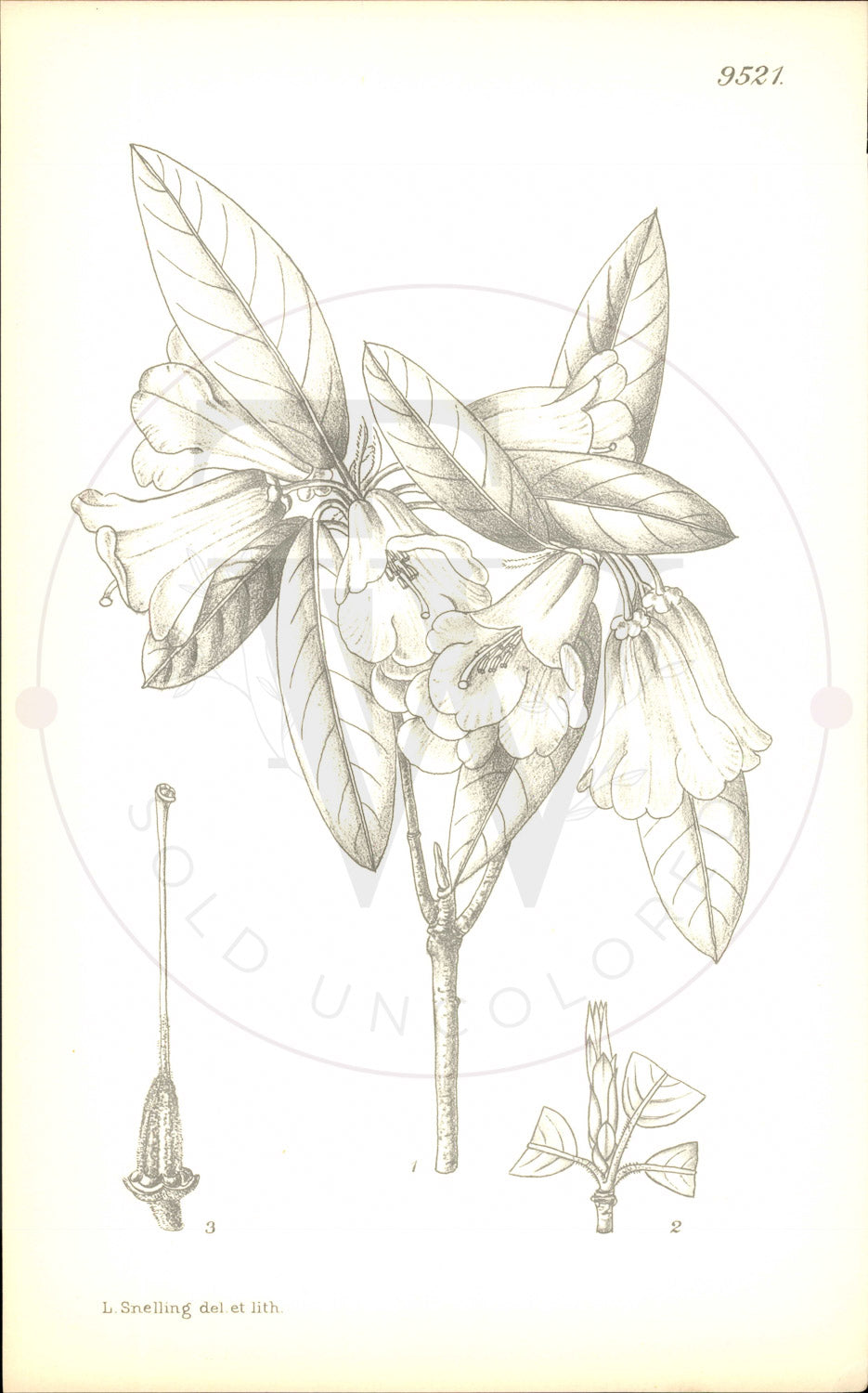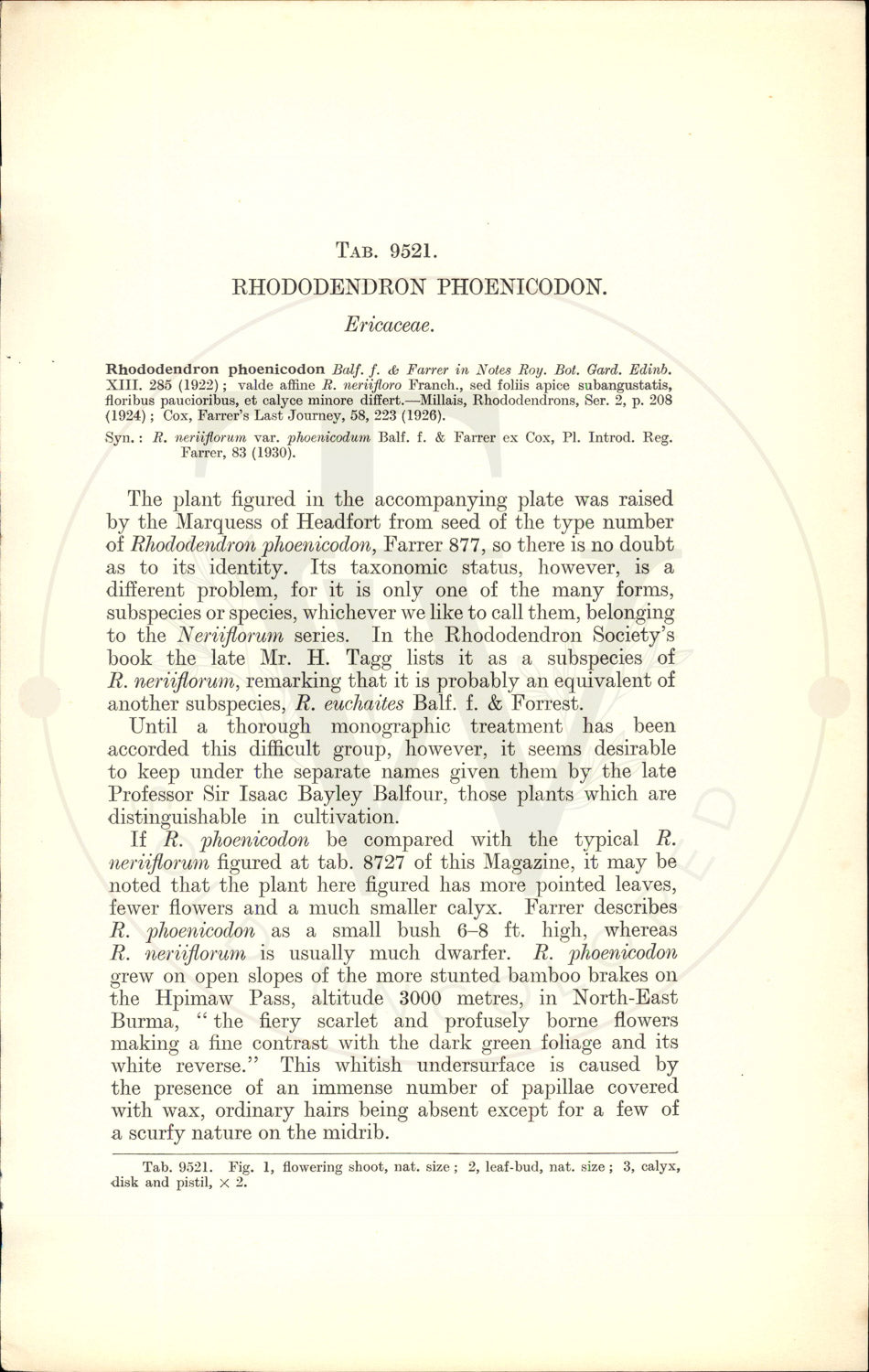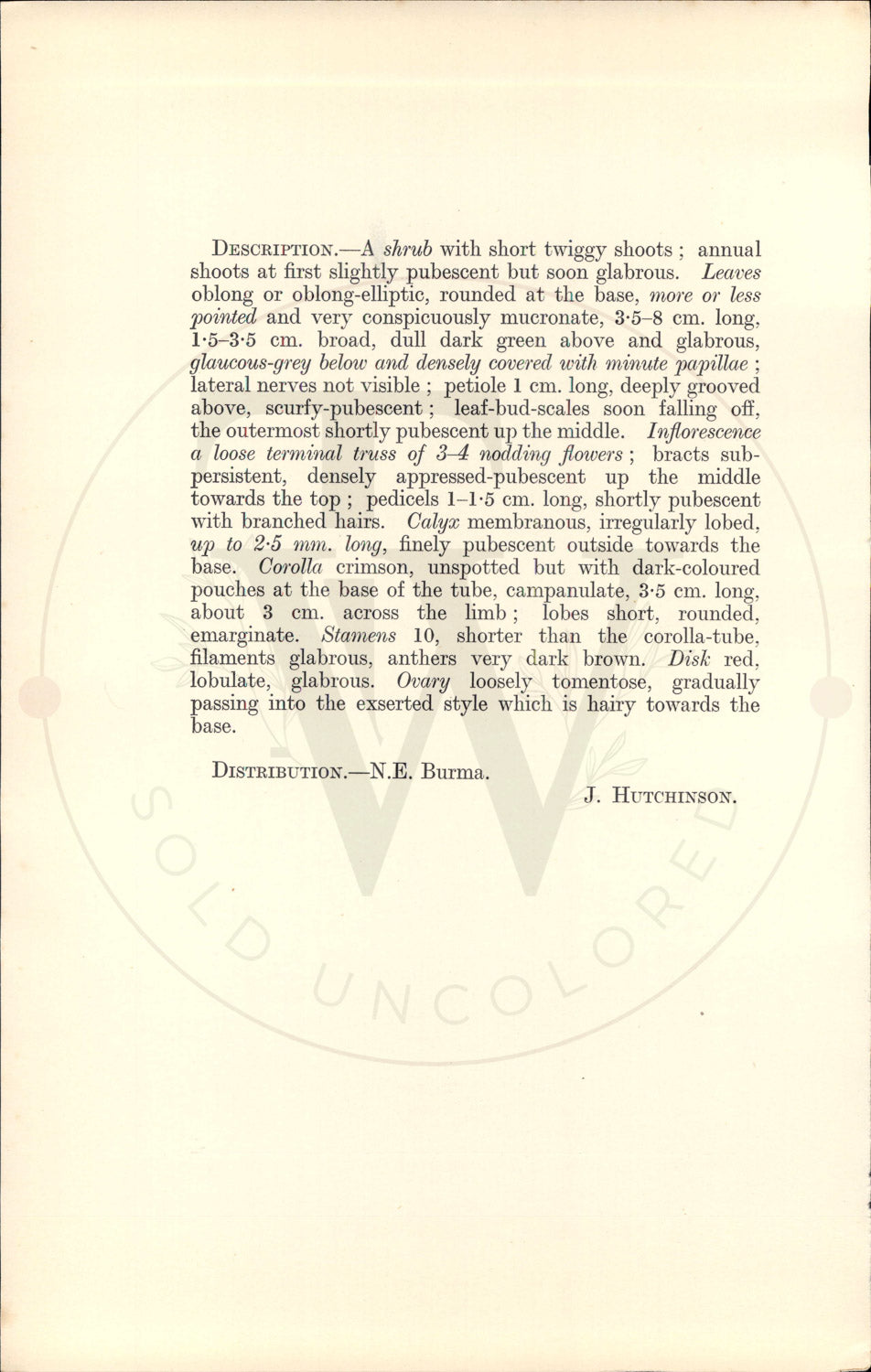Curtis Botanical Magazine
Plate 9521 - Rhododendron phoenicodon
Plate 9521 - Rhododendron phoenicodon
Couldn't load pickup availability
Curtis's Botanical Magazine - Plate 9521
Rhododendron phoenicodon
Family: Ericaceae • Publication Date: January 1st, 1934
Distribution: -N • Tab Author: J. HUTCHINSON
Botanical Description
The plant figured in the accompanying plate was raised by the Marquess of Headfort from seed of the type number of Rhododendron phoenicodon, Farrer 877, so there is no doubt as to its identity. Its taxonomic status, however, is a different problem, for it is only one of the many forms, subspecies or species, whichever we like to call them, belonging to the Neriiflorum series. In the Rhododendron Society's book the late Mr. H. Tagg lists it as a subspecies of R. neriiflorum, remarking that it is probably an equivalent of another subspecies, R. euchaites Balf. f. & Forrest. Until a thorough monographic treatment has been accorded this difficult group, however, it seems desirable to keep under the separate names given them by the late Professor Sir Isaac Bayley Balfour, those plants which are distinguishable in cultivation. If R. phoenicodon be compared with the typical R. neriiflorum figured at tab. 8727 of this Magazine, it may be noted that the plant here figured has more pointed leaves, fewer flowers and a much smaller calyx. Farrer describes R. phoenicodon as a small bush 6-8 ft. high, whereas R. neriiflorum is usually much dwarfer. R. phoenicodon grew on open slopes of the more stunted bamboo brakes on the Hpimaw Pass, altitude 3000 metres, in North-East Burma, the fiery scarlet and profusely borne flowers making a fine contrast with the dark green foliage and its white reverse." This whitish undersurface is caused by the presence of an immense number of papillae covered with wax, ordinary hairs being absent except for a few of a scurfy nature on the midrib. 66.
Synonyms
R. neriiflorum var. phoenicodum Balf. f. & Farrer ex Cox
About This Print
Original black and white uncolored botanical print from Curtis's Botanical Magazine (established 1787). This 9000s series print is from unissued publisher stock, never hand-colored, representing the authentic plate as it appeared in the magazine. Edited by Sir Arthur William Hill for The Royal Horticultural Society, London.
Share







